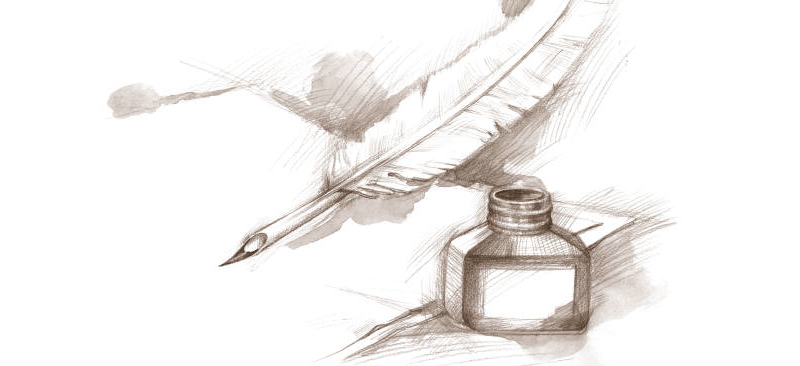

Quelques références sur la stéganographie moderne :
L’idée
du codage matriciel (en
anglais : « Matrix
encoding ») a été introduite
en
stéganographie par Cranddall [Crandall 1998] en
1998. La première implémentation a ensuite
été
proposée par Westfeld avec l’algorithme de
stéganographie F5 [Westfeld
2001]. L’objectif
est de
transmettre un message au sein d’une image via la
modification de
l’image, mais
avec la contrainte de minimiser le nombre de coefficients de
l’image
modifiés.
Plus précisément, le codage
matricielconsiste
à détourner l’utilisation classique des
codes
détecteurs et
correcteurs d’erreur en bloc. L’idée
consiste du
côté décodeur
(c'est-à-dire à
la réception de l’image) à calculer les
syndromes
de chaque bloc de
coefficients à partir de la matrice de contrôle du
code
correcteur. Le
syndrome
correspond au message qui est contenu dans l’image. Toute
l’astuce
consiste
donc, du côté codeur
(c’est-à-dire à
l’émission de l’image), à
modifier
l’image
de sorte que les syndromes calculés au décodeur
représentent le message
et
également de sorte que l’image soit le moins
modifiée.
Evaluation aveugle de la sécurité avec les « classifieurs » de l’état de l’art de Pevny et Fridrich :
[Westfeld 2001] A. Westfeld: “High
capacity despite
better steganalysis (F5 – a steganographic
algorithm)”. In: Moskowitz,
I.S.
(ed.) IH 2001. LNCS, vol. 2137, pp. 289–302. Springer,
Heidelberg
(2001). [Kim et al. 2007] Y. Kim, Z. Duric, D.
Richards:
“Modified
matrix encoding technique for minimal distortion
steganography”. In:
Camenisch,
J.L., Collberg, C.S., Johnson, N.F., Sallee, P. (eds.) IH 2006. LNCS,
vol.
4437, pp. 314–327. Springer, Heidelberg (2007). [Zhang
et al. 2009] R. Zhang, V. Sanchev, H. J. Kim: “Fast BCH
Syndrome Coding
for
Steganography”. In: Katzenbeisser, S. and Sadeghi, A.-R (Ed.)
Information
Hiding 2009, IH’2009, LNCS 5806, pp. 48-58, 2009,
Springer-Verlag
Berlin
Heidelberg 2009. [Sachnev
et al. 2009] V. Sachnev, H.J. Kim and R.
Zhang: “Security Less Detectable
JPEG
Steganography Method Based on Heuristic Optimization and BCH Syndrome
Coding”, The
11th ACM Workshop on Multimedia and Security,
MM&Sec’09, September
7–8, 2009, Princeton, New Jersey, USA.
[Zhang
et al. 2008] W. Zhang, X. Zhang,
and S. Wang. “Maximizing steganographic embedding efficiency
by
combining
Hamming codes and wet paper codes”. In K. Solanki, K.
Sullivan, and U.
Madhow,
editors, Information Hiding, 10th
International Workshop,
Lecture
Notes in Computer Science, pages 60–71, Santa Barbara, CA,
June 19–21,
2008.
Springer-Verlag, New York. [Fridrich et al. 2007] Fridrich, Pevny, T.,
Kodovsky,
J.: Statistically undetectable JPEG steganography: Dead ends,
challenges, and
opportunities. In: Dittmann, J., Fridrich, J. (eds.) Proceedings of the
9th ACM
Multimedia & Security Workshop, Dallas, TX, September
20–21, pp.
3–14
(2007). [Pevny and Fridrich 2007] Pevny, T., Fridrich,
J.:
Merging Markov and DCT features for multi-class JPEG steganalysis. In:
Delp,
E.J., Wong, P.W. (eds.) Proceedings SPIE, Electronic Imaging, Security,
Steganography, and Watermarking of Multimedia Contents IX, San Jose,
CA,
January 29 – February 1, vol. 6505, pp. 3-1–3-14
(2007). [Pevny and Fridrich 2008]
Pevny,
T., Fridrich, J.: Benchmarking
for Steganography In : K. Solanki, K. Sullivan, and U.
Madhow
(Eds.):
Proceeding International Hiding IH’2008, LNCS 5284, pp.
251–267,
Springer-Verlag Berlin Heidelberg 2008. [Fontaine and Galand 2009]
C. Fontaine and F. Galand: “How Reed-Solomon Codes Can
Improve
Steganographic
Schemes”, Hindawi Publishing
Corporation EURASIP Journal
on
Information Security Volume
2009, Article ID 274845, 10 pages doi:10.1155/2009/274845. [Pevny et al. 2009] T. Pevny, P.
Bas and J. Fridrich, Steganalysis by
Subtractive Pixel Adjacency Matrix, Proc. ACM Multimedia
and
Security
Workshop, Princeton, NJ, September 7–8, pp. 75–84,
2009. |